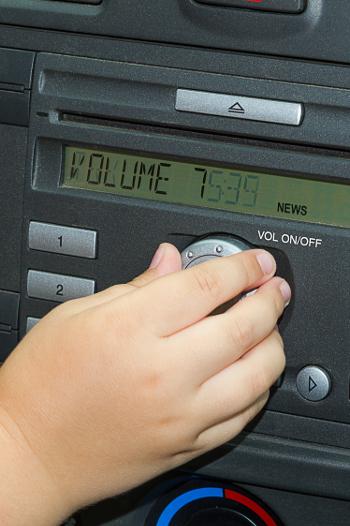What music is that?
Duration/age

Next time you are travelling in the car with your child and the radio is playing, talk about the music you can hear. Is it modern pop music with singing or is it orchestral with no singing? Are there lots of people singing and playing instruments?
This style of music is called jazz. There are different styles of jazz music. Some jazz music is older and doesn’t have any singing.
This song is a duet. It’s called that because it is sung by two people.
You could talk to your child about the different types of music that different radio stations play. Some stations will play the latest popular music but other stations play orchestral music created by composers from a long time ago.
As you and your child listen to the radio, talk about how fast or slow the music is. Your child could try and work out how fast the music is by clapping out the different beats. Does the rhythm of the music stay the same through the whole song? Are there times when it is different?
The music in this song starts off very slow but it changes halfway through. When the chorus is sung the beat is much faster than the rest of the song.
This song is very slow compared to the last song.
The pattern of the music keeps changing in this song. Sometimes the music is very fast and other times it is very slow.
Talk to your child about the different words that the singer is using. Explain that they are like the words in a book. The words help to tell the story of the song and tell us how to feel about the song.
I don’t like that song. The words are very sad and make me want to cry.
This is such a happy song. I feel like dancing when I hear it.
Materials you will need
- Radio
- Mobile phone
- Your ears
Alternative tools
- TV
- Computer or tablet / smartphone
- CD, DVD, Record
Skills this activity improves
Why does this matter?
Listening and talking about music as it plays helps your child to develop listening and classification skills. It helps them to develop the language to explain what they are hearing.
As they experience different music genres they will begin to predict the different patterns within the music. They will be using the language of measurement to describe how the pattern is different. The music might be slow or quick or both.
By hearing different music styles and genres your child will begin to sort and classify the music. They might sort based on how it makes them feel, if it contains singing, or the type of instruments used. As your child begins to sort and group music they are developing rich language and vocabulary to explain their ideas and feelings.
What does this lead to?
Listening to different genres of music helps your child to develop good listening skills and distinguish different sounds and language patterns. When children are able to hear and discriminate between sounds and patterns within music, speech and language they are developing an understanding that each letter has its own sound.
Hearing and identifying different sounds and patterns within language helps them to develop the skills to distinguish the different sounds within words. As they begin to listen carefully to sound patterns they will begin to identify that there are sounds at the beginning, middle and end of words. Once they can identify individual sounds they will begin to identify where else they can hear the same sound.
'My name starts with a B. Bat and book also start with a B.'
Being able to identify sounds within words and individual sounds helps a child learn to spell words, read and write.
Language to use
- Song, music, singer, artist, musician
- Jazz, orchestral, pop, swing, band, religious, folk, blues, soul, chart toppers, popular, opera, rap
- Traditional, modern, contemporary
- Beat, count, rhythm, pace, pitch
- Fast, slow
- Beginning, end, middle, chorus
- Solo, duet, choir, band, orchestra
- Wind instruments, string instruments, percussion
- High pitch, low pitch, medium pitch, tone, vocal range, vocal type
- Key
- Compare, contrast
- Baritone, soprano, mezzo-soprano, alto, contralto, tenor, baritone, bass
Questions to use
- What happens if the orchestra is louder than the singer?
- Do you feel different when you listen to fast music compared to slow music?
- Do songs and music tell a story?
- Do all people like the same music?
- Why do we have different styles of music?
Useful tips
- You might also like to take a look at the activities Movin' and groovin' with rhymes and What sound is that?
- The ideas and messages shared in some songs might be distressing for young children. Listen carefully to a song before talking about the words with your child.
- Information about hearing, sound and language development can be found in your child's health record in the Blue Book.
- If you are concerned about your child's hearing talk to your local doctor.
- Remember to talk to your child in your home language.
More ideas
Take a look at the word play section of GreatStart for more ideas on language and listening.
Variation by age
Three to five year olds
- Make a CD of your child’s favourite music.
- Look in the newspaper for free music performances that you and your child can attend.
- Make you own instruments to play along with your favourite song.
Questions to ask
- What is the singer saying?
- Do all songs have words?
- Can you hear the different instruments used in the song?


